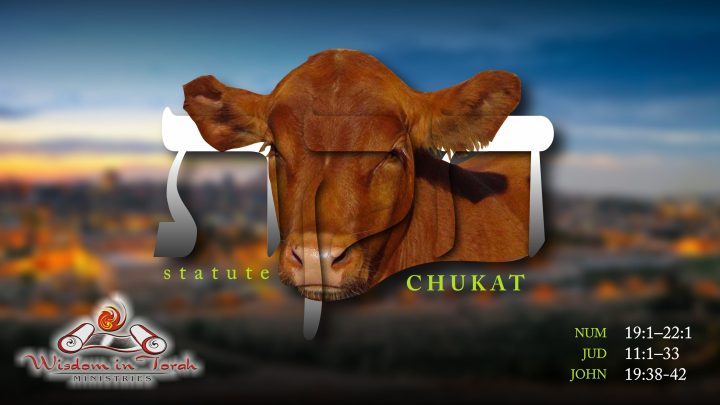
Don't Forget to Share!
This Parashah covers the Red Heifer ceremony for cleansing a person contaminated with corpse impurity, the death of Miriam, the waters of Meribah with Mosheh striking the rock against God's command, Edom's refusal of passage, Aharon's death, the incident with the bronze serpent, the journey to Moab, and the defeat of king Sihon and Og.
Have you ever wondered the following...
- Why Moshe and Aaron had to die outside the Land of Israel?
- What sin did they commit that YHWH said that they would not enter the Land?
- Why are the deaths of Miriam, Moshe and Aaron are all mentioned within the text of Chapter 20?
This page includes Torah Portions from multiple years covered by Wisdom in Torah. Each year we covered the Torah from a different perspective so you can explore each Parashah from a different perspective and focus.
- 2010 Portions: Focus on Messianic connections in the Parashah
- ANET Portions: Focus on the ancient Near Eastern cultural context of the Parashah
- Mitzvot Portions: Focus on explaining and exploring the commandments found in the Parashah (in progress)
- 2015 Portions: Revisiting the Parashah looking at the ancient cultural context more in depth with additional areas that have been researched
- Brit Portions: Focus on connecting the Brit Hadashah (New Testament) to the Parashah
Oops, this is members-only content
This page requires at least a basic level membership to access the teaching.
Audio
Oops, this is members-only content
Resources
The following is a list of recommended resources for this teaching:
- More resources coming soon...
Categories
42 thoughts on “Torah Portion Chukat Complete”
Leave a Comment
You must be logged in to post a comment.


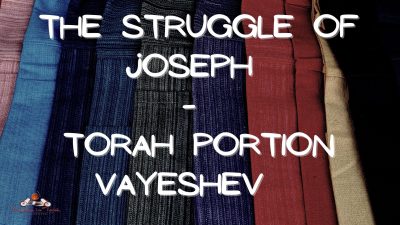
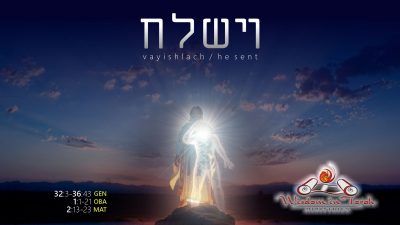
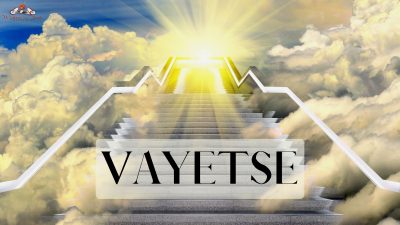
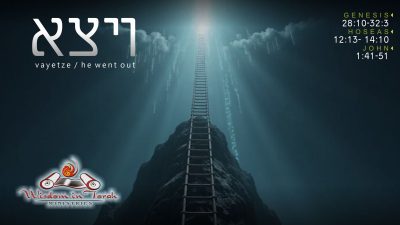

Greetings Rico,
My question is regards to The Tabernacle/Temple, etc., being in the shape of a man.
Since I’m a “visual learner,” can you recommend any pictorial resources that can be used in conjunction with the descriptions in scripture? I’ve looked at pictures of both but cannot fully “see it.” Any suggestions from my fellow bloggers as well would be appreciated.
Roni Mathews
Shalom Rico,
Thank you so much for your obedience and submission to Yah, you’re a blessing.
My question is technical, can someone assist me in opening the “Red Heifer” power point document on a Mac? I’ve tried 3 times, changing “.ppt to .pdf, etc., still doesn’t open.
Thanks.
Roni Mathews
mathews.roni@gmail.com
WOW, Rico! I am so grateful a friend told us about your site. We have been really blessed by your teachings and are telling others about your weekly audiovisuals because you explain things in such a practical way to “connect” the Scriptures and provide thorough instruction. I tell people who want to disregard what is commonly referred to as the “Old” Testament (calling it passe) and focus almost exclusively on the “New” Testament that it is akin to putting the roof on a house with no foundation. How can the roof stand without the vital support? Your instruction on the parah adumah, as just one example, illustrates this lesson very well and I appreciate it! I am not ashamed to admit that I have listened to this particular portion a few times to glean every kernel I can and because I want to be capable of sharing the truth as accurately as possible. The significance of the red heifer has been on my mind for a while and am grateful to Yehovah for you and your ministry. All of your lessons are edifying and this particular one is such an eye opener. HalleluYAH! May Avinu Sh’bashamayim bless you and keep you and your family in His loving care – I know He does. Shabbat Shalom, Cassandra Conroy
Patrick said
Shalom Patrick,
The short answer is no, a human is not acceptable for a burnt offering to Yahweh. A few things here;
1. All offerings were to be first brought to a temple priest. The priest then had to approve of the offering as being acceptable.
2. Only clean animals were acceptable to be sacrificed for the altar. Unclean animals could be brought to the priest and they could be either redeemed which would mean that the priest could accept the animal for a monetary exchange or the priest could accept the animal but it would be used for temple work service and not temple sacrifice.
3. NO ONE but a priest was allowed to accept a sacrifice and NO WHERE else could an animal be sacrificed but at the sanctified altar of the temple.
Had Jephath gone to the priest, the priest may have allowed him to either redeem his daughter (for money) or accepted her for temple work service (weaver, seamstress, cook, etc.). The priest may have possibly even had the authority to void the vow within a certain timeframe, that, I’m not sure about.
The hinted lesson here is the impetuousness of the vow, the pride of Jephath and the high priest and the wrongness of the vow. Supposedly Jephath thought the high priest should have come to him and the high priest thought Jephath should have gone to him and the innocent daughter died unnecessarily.
There is also some indirect commentary here to how far the nation of Israel had drifted away from God. Jephthah is also noted as being the son of a prostitute or strange (foreign)woman and he may have been influenced by her practices with other gods or else during his time of estrangement from Israel when he was run out of town by his brothers…
Some of the information I wrote is from oral tradition teachings but most of it is from Rico’s temple service teachings.
http://jwa.org/encyclopedia/article/jephthahs-daughter-midrash-and-aggadah
Hello,
I’d like to post some things to ponder on along with the topic of the Red Heifer.
Absolutely I see the Red Heifer statute as a shadow picture of Messiah.
Also see her (the heifer: as the woman) as a type and shadow of Israel.
Bemidbar 19:9 : in the Hebrew (as Brad Scott points out) the ‘stand alone’
Aleph-Tav , stands between the ashes and a clean place. Hmmmm.
Revelation 12:1-5 (His story in the Stars… )
a woman (perhaps the heifer)
, gives birth to a male child (the lamb)
… caught away to His Elohim and His Throne. (The Temple)?
Looking at: From ‘The Wars of the Jews’ , by Josephus (page 582)
http://www.ccel.org/j/josephus/works/war-6.htm
which is Book 6, scroll down to Chapter 5 Paragraph 3, about line 7.
“At the same festival also, a heifer, as she was led by the high priest to be sacrificed, brought forth a lamb in the midst of the temple.”
Was Elohim showing us another layer and shadow pictures of things to come
IF this really happened (the heifer gives birth to a lamb in the midst of the temple)
and this was right before the temple was destroyed
Then we, like the heifer…
overcome him (that serpent of old) because of the BLOOD of the LAMB
and because of the Word of their witness, and they did not love their
lives to the death. (like the death of the heifer?) Revelation 12:11
Any of you have thoughts on this Josephus story?
Shalom
Karen in Big Springs
G’day Rico,
Brilliant teaching on the red heifer, it explained so many things that have puzzled me for years. As to why Yeshua wasn’t burned, I’ve always assumed that the burning was a picture of His suffering. The animal was killed painlessly then burned; Yeshua had to go through it the hard way – the burning/suffering first.
Keep up the good work dear brother. By the way, I heard you singing on Jono’s program.Is that also you singing the Aaronic benediction at the end of your own Torah teaching? Whoever it is, it’s hauntingly beautiful.
Shalom b’Shem Yeshua
Mike (my real name!)
Shalom Patric
My opinion…
I thought of this and G-d was going to save Israel anyways. Because of his little faith he made such a promise, so it was his desicion to do that. G-d didnt ask for anything. So since it was a promise, Jeph did it…. I think that if he repented of doing that promise i think G-d would have forgive him for it….. But again, Jeph made that offering and doesn’t mean that G-d accepted it…maybe this is a lesson to not offer human sacrifices to G-d……it is a very sad story…he could have offer clean accepted animals….and also it can be learned something we do alot: we talk about all things G-d is capable to do and his promises and want others to believe but then we doubt of what we say, so then we make promises not needed in order to G-d accomplish His good will and his promises…
Good morning, Rico! Thank you for your teaching and study in the Word!
I was wondering if you had insight into the Bronze Serpent. It has puzzled me for some time that YHWH would command Mosheh to make a carved image of a bronze serpent, and seemingly contradict His prior commandment to not make any carved images.
I am sure that YHWH is not a man that he should lie, so I am assuming that there is some understanding of this scripture in Numbers 21 that I am overlooking.
I looked at some of the hebrew in Strongs for the word “bronze” and it can also mean lust or harlotry, so perhaps YHWH was trying to get the people to openly see their own sin?? So the image represented the sin itself? It wasn’t an object of worship then?
What are your thoughts on this? Any insight would be helpful!
Ben and Sashya Clark
Hi Ben and Sashya,
Just a note to think about and picture:
about the fiery serpents and the
pole with the bronze serpent….
It helps to note that in the Hebrew, the ‘stand alone’ alph-tav
stands between the fiery serpents and the people.
(Bemidbar 21:6)
Shalom
Karen in Big Springs
Hi from Montana
Thanks Rico! Great teachings. The exciting thing was that alot of what you said. were things that I had been hearing from other teachers, so by the word fo two or three witnesses! Also for a long time I have felt that the reason Moshe was told to strike the rick the first time was that Yeshua was to be struck the first time but the reason it was a sin to strike it the second time was that NO ONE WOULD STRIKE HIM IN HIS SECOND COMING! and thus the picture and type and shadow would be broken! Thanks and hope you (Rico) and all that read these have a blessed 4th of July!
Every year I have read this portion, I have been stumped to the meaning of the red heifer. Oh my!! This year it clicked while reading it on my own – and after listening to this so many “puzzle pieces” came together. I’m with Liz on the relation to “law of jealousy’ – I came here to post that question. I am going to get the teaching on the red heifer so I can understand further! Thanks, Rico! I was hoping to see you at the MIA this weekend, but had to stay home. Did get to see J Settel last night – awesome night. Reminds me of the “Jesus movement in the parks” in NY and CA!!! (But much more civilized!!)
What a great teaching! Thanks for spending the time studying & looking for information to pass along to us. What a great blessing you are to our family! My husband Will & I truly enjoy spending time studying with you on Shabbat! Can’t wait til you make your way down I-20 again & stop off in Monroe, Louisiana!
Hi Rico,
Thanks for this very informative teaching…I’m learning so much and it’s hard to take it all in and retain it! I have been wondering about the issue of the golden calf…you mention briefly that there is a parallel w/ the red heifer, but didn’t elaborate so i’m not sure what you’re referring to exactly other than the fact that they were both burned, one unholy, one righteous. But i’ve been thinking rather that there could be a strong connection with the “test of the unfaithful wife” from Numbers 5 and the golden calf in Exodus — specifically the unfaithful wife is forced to drink dust from the tabernacle floor mixed w/ water and if she gets sick she is guilty. W/ the golden calf, Moses burned the idol to dust and mixed w/ water and forced the people to drink it. Then immediately afterwards the men go through the camp and kill 3000 people….the guilty…how did they know they were guilty? Maybe it was because they got sick from drinking the gold dust mixed w/ water.
Would love to know your thoughts on this, or if you have another teaching on the topic.
Shabbat shalom!
Liz
Hey Liz…you gotta go listen to Rico’s full teaching on The Red Heifer…he goes into much more detail on that. It’s probably my favorite teaching he has done!